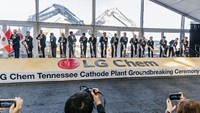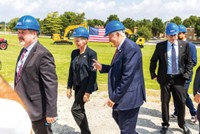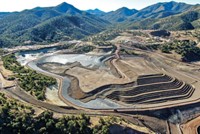Advertisement
Grab your lab coat. Let's get started
Welcome!
Welcome!
Create an account below to get 6 C&EN articles per month, receive newsletters and more - all free.
It seems this is your first time logging in online. Please enter the following information to continue.
As an ACS member you automatically get access to this site. All we need is few more details to create your reading experience.
Not you? Sign in with a different account.
Not you? Sign in with a different account.
ERROR 1
ERROR 1
ERROR 2
ERROR 2
ERROR 2
ERROR 2
ERROR 2
Password and Confirm password must match.
If you have an ACS member number, please enter it here so we can link this account to your membership. (optional)
ERROR 2
ACS values your privacy. By submitting your information, you are gaining access to C&EN and subscribing to our weekly newsletter. We use the information you provide to make your reading experience better, and we will never sell your data to third party members.
Energy Storage
Cathode projects advance in North America
Redwood Materials will supply a Panasonic battery factory
by Matt Blois
November 17, 2022
| A version of this story appeared in
Volume 100, Issue 41

Several big carmakers are building North American factories for batteries that will power their electric vehicles. But right now there’s no local plant that makes cathode material for those batteries.
Redwood Materials is one of several companies that wants to fill that gap. The company says its planned cathode-material facility in Nevada will supply a battery factory Panasonic is building in Kansas.
Other projects are also advancing.BASF, Posco, and Umicore are planning billions of dollars of investment in Canadian cathode-material plants. In July, partnerships between SK On and Ford Motor, and LG Chem and General Motors, indicated interest in building North American cathode-material plants. In October, Our Next Energy and Gotion High-Tech secured tax breaks for billion-dollar cathode-material factories in Michigan.
Chinese companies now produce about 70% of the material used to make cathodes, according to the International Energy Agency. The remaining production is concentrated in Japan and South Korea; there is almost none in North America.
Michael Sanders, a battery industry analyst with Avicenne Energy, says that’s because until recently there weren’t enough North American battery factories buying cathode material. But companies have begun building dozens of them. According to Sanders, the tipping point came when battery makers announced plans for 250 GW h of battery cell production in the US .
“That’s when we started to see many of the materials move,” Sanders says. “Cathode, one of the highest-value materials in the cell . . . makes sense to localize.”
The US government is accelerating investment by offering tax breaks and grants for US-made battery materials.
Redwood isn’t specifying how much material it plans to sell to Panasonic, but Redwood has ambitions to produce enough cathode and anode material for 1 million electric vehicle batteries by 2025 and 5 million by 2030.
Sanders says one challenge for Redwood will be securing enough raw materials to produce cathode material at that scale. Redwood emphasizes its ability to recycle, but Sanders doesn’t expect recycling to be a significant source of raw materials until after 2030.





Join the conversation
Contact the reporter
Submit a Letter to the Editor for publication
Engage with us on Twitter